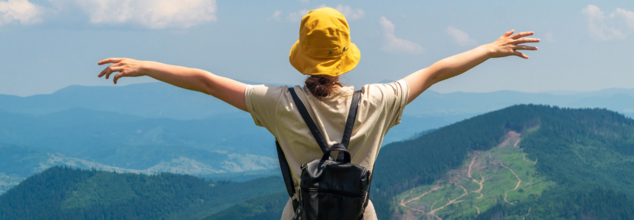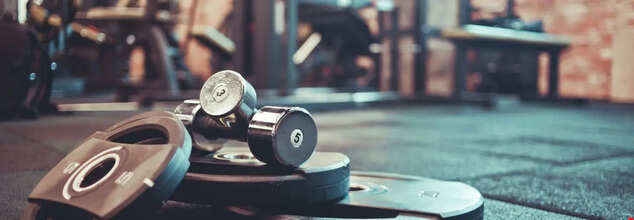- Health Conditions A-Z
- Health & Wellness
- Nutrition
- Fitness
- Health News
- Ayurveda
- Videos
- Medicine A-Z
- Parenting
- Web Stories
Weekend Warriors Get Similar Brain Benefits To Regular Exercisers, Study Suggest

Weekend Warriors Benefits (Credit-Canva)
With corporate culture on the rise and people working long office hours, it is difficult to find time to exercise every day. Many people are opting to be weekend warriors, but the question remains whether it is enough to be as healthy as the people who exercise daily! Weekend warriors, those who concentrate their physical activity into one or two days of the week, can reap significant health benefits similar to those who exercise regularly.
Recent studies have shown that this approach can lower the risk of cognitive decline, dementia, stroke, Parkinson's disease, anxiety, and depression.
What are Weekend Warriors?
The term weekend warrior is used to describe a person who practices most of their physical exercises over the weekends through high-intensity exercises. It is a growing trend today because of the increasing pressure to stay fit amidst work-packed weeks.
Weekend warriors take up their busy schedule to strike a balance between job and fitness goals, focusing more on high-intensity sessions over the weekends. It is a very flexible and motivating strategy that promotes fitness and general well-being.
What are the Benefits of being a Weekend Warriors?
The study published in the British Journal of Sports Medicine revealed that just one or two vigorous workouts per week can significantly reduce the risk of mild cognitive impairment. This finding challenges the conventional wisdom that consistent daily exercise is necessary for optimal brain health. The research suggests that the total volume of exercise, rather than the frequency, plays a crucial role in cognitive function.Other benefits of weekend warrior workouts go beyond cognitive health. In another study published in Nature Aging demonstrated that individuals who concentrate their exercise into a few intense sessions per week experience significant reductions in the risk of various neurological and psychological conditions, including Parkinson's disease, stroke, dementia, depression, and anxiety. These findings highlight the versatility of exercise and its potential to improve overall well-being.
Other studies have also shown that when you rigorously exercise even during the weekends have good physical health benefits similar to people who work out daily.
How Can you Balance Health and Exercise?
While weekend warrior workouts can be highly effective, it's essential to balance intensity with adequate recovery time. Concentrating a significant amount of exercise into a short period can increase the risk of injury and overtraining. It's advisable to listen to your body, gradually increase the intensity and duration of your workouts, and incorporate rest days into your routine.
The key to reaping the rewards of weekend warrior workouts is to ensure that you meet the recommended guidelines of at least 150 minutes of moderate-intensity activity per week.
Standing Yoga Poses That Can Help You Align Your Posture

(Credit-Canva)
Yoga is a great practice for people of all ages, conditions, and goals. Whether you wish to lose weight, strengthen your muscles, joints or structure or simply incorporate some exercise into your daily schedule. It is a great way to ensure your body gets the movement it needs.
With more and more people opting for desk jobs, or spending extended hours sitting, hunched over a laptop, back issues, along with many other problems have become the norm. You may realize that overtime, your body’s posture is getting ruined. Not only does this pose an issue for the way you present yourself, but it also affects your spine health, back health as well as bone health, whether it is your hip, knee or any other joint. To better this, try doing standing yoga poses.
Standing Yoga Poses For Posture
Standing yoga poses are fundamental for building strength, balance, and body awareness, all crucial for improving posture. By focusing on proper alignment within these poses, you can strengthen the muscles that support your spine, encouraging a more upright and open posture.
Mountain Pose (Tadasana)
This foundational pose helps you find your body's natural alignment. It strengthens your core and legs, bringing awareness to how you hold yourself, and encourages spinal lengthening. Focus on even weight distribution through your feet for a strong base.
Tree Pose (Vrksasana)
A classic balancing pose, Tree Pose improves stability and alignment by requiring a strong foundation through one leg. It helps to lengthen the spine and cultivate a sense of groundedness and lift, promoting better overall balance and posture.
Extended Triangle Pose (Utthita Trikonasana)
Triangle Pose lengthens the sides of your body and opens your chest. It strengthens your core, crucial for good spinal alignment. This pose also stretches tight hamstrings, which can otherwise pull on the pelvis and negatively affect your posture.
Warrior II Pose (Virabhadrasana II)
This powerful pose builds strength in your legs and engages your core, directly supporting better posture. The open hip stance and extended arms encourage an upright torso and broad collarbones, effectively counteracting any tendency to slouch.
Chair Pose (Utkatasana)
Chair Pose powerfully strengthens your legs and deep core muscles, essential for maintaining proper spinal alignment and preventing a slumped posture. It also helps to open your chest and shoulders, promoting an overall more upright stance.
Half Moon Pose (Ardha Chandrasana)
Half Moon Pose challenges your balance and strengthens your entire body, especially your core and legs. It opens the hips and chest, promoting spinal elongation and significantly improving your overall posture. It fosters balance and stability.
Standing Forward Bend (Uttanasana)
While a forward bend, this pose is excellent for releasing tension in the hamstrings and lower back, common contributors to poor posture. It encourages spinal lengthening and can help reset your posture by alleviating tightness that pulls your pelvis out of alignment.
Spent A Long Day Walking And Travelling? Essential Yoga Stretches You Must Do

(Credit-Canva)
Travelling is one of the best ways to experience new places and cultures as well as enjoy a good time. It is a great way to support your mental health. The break from your general monotonous routine helps your brain feel relaxed as well as helping ease anxiety, stress, and other day-to-day struggles. However, it is also strenuous, walking for hours or moving from one place or the other, can be mentally as well as physically taxing. After hours of walking or sitting during travel, your body can feel stiff, sore, and fatigued. So how does one tackle this?
Yoga Stretches After Travelling
Yoga is a great way to ensure you do not have to suffer muscle fatigue for days, before you feel any better. Yoga stretches are designed to target common areas of tension, helping to release discomfort, improve circulation, and re-energize you.
After a long day of walking or traveling, your body can feel stiff and tired. These yoga stretches will help release tension, improve blood flow, and re-energize your body.
Seated Cat Cow
This gentle stretch helps your spine move freely after sitting or standing still. It eases back pain and improves posture by gently arching and rounding your back. This movement also aids digestion, which can sometimes be slow during travel. It's a great way to start releasing stiffness.
Seated Spinal Twist
Twisting your spine gently helps release built-up tension in your back, especially after long trips. This pose improves how your spine moves and can soothe back aches. It also gently massages your internal organs, which can help with digestion and ease stress.
Child's Pose
This deeply calming pose is perfect for relaxing after a long day. It gently stretches your hips, thighs, and ankles, which can get tight from walking or sitting. It also eases back and neck pain and helps calm your mind, reducing stress and aiding digestion.
Downward-Facing Dog
This full-body stretch is great for waking up your body. It helps lengthen your spine and stretches tight hamstrings and calves from walking. It also strengthens your arms and core, boosts circulation, and can help reduce fatigue and clear a foggy mind.
Forward Fold
This classic stretch brings a sense of peace and helps release tension in your legs and spine. It deeply stretches your hamstrings and calves, improving overall flexibility. Folding forward also calms your mind, reduces stress, and can gently assist with digestion.
Legs Up the Wall
This relaxing pose is wonderful after being on your feet or traveling. It helps reduce swelling and tiredness in your legs by improving blood flow. It's also very calming for your nervous system, relieving tension and stress, and gently stretching your lower back and hamstrings.
Low Lunge
This pose is excellent for opening your hips and stretching the front of your thighs (hip flexors), which often get tight from sitting or walking. It improves hip movement, strengthens your legs, and can gently open your chest and shoulders, counteracting slouching from travel.
Tree Pose
This balancing pose strengthens your legs and core, while also improving your focus and stability. It's helpful after a day of varied walking surfaces or crowded places. It gently opens your hips and improves your balance and concentration, which can reduce mental tiredness.
Eagle Pose
This unique balance and twist targets your shoulders, hips, and upper back, areas that often get tight from carrying bags or awkward travel positions. It deeply stretches these areas, strengthens your ankles and calves, and boosts balance and focus. It can also help relieve leg discomfort.
How To Perfectly Do Skull Crushers?

Credit: Canva
What is your favourite arm day exercise? There's a good chance your answer is the dumbbell biceps curl. That is indeed a great answer but that excercise alone is not enough. If your goal is to build balanced arm muscle and strength, you'll want to pair your biceps work with a complimentary triceps movement. One of the best choices to do that is the skull crusher.
How To Do A Scull Crusher?
- Start by lying back on the bench. Don't arch your back—drive your shoulder blades into the bench, squeeze your abs and glutes, and keep your feet flat on the floor.
- Press the weight straight up above your chest. Your upper arm should be just past 90 degrees, at a 91 or 92 degree angle. Keep your wrists strong and a tight grip on the bar.
- Lower the weight slowly down to an inch above your forehead, moving only at the elbows. Don't allow your shoulders to shift forward; keep your upper arm still.
- Drive the weight back up (again moving only at the elbows), squeezing your triceps at the top.
- Keep these more detailed form tips from Samuel in mind during your skull crusher sets.
Here Are Few Things Your Should Know
No Arch: Maintain a sturdy body position: Feet flat on the floor, squeezing your glutes, and keep your core active so that you’re not arching your back on the bench. I know, I know; we always say you shouldn’t arch your back, but it’s more important to get the most out of the skull crusher. You want, at minimum a perpendicular upper arm angle relative to your torso; anything less than that, and your arm action misses the point of the skull crusher. If you arch your back, it’s harder to find that proper angle.
Shoulder Position: Once you have the bar over your head, drive your shoulders aggressively into the bench and maintain a little bit of tension in your mid-back. Then lean your upper arms back just slightly. Typically, you’ll see people aim to keep their upper arms perpendicular to the floor; I want you to be at a 91- or 92-degree angle instead. That slight shift places more tension on the triceps when you straighten your arms and prevents the straight-armed position from being a position of rest. Now you need to fully flex your triceps to maintain straight arms.
Elbows Tight: As you lower the weight, work to keep your elbows in. Your elbows and wrists should both be shoulder-width apart; not closer or farther apart. It’s common for people to let their elbows flare out as they’re doing skull crushers; avoid this. That’s a good way to injure your shoulders and it also takes emphasis off your triceps, diminishing the effectiveness of the move.
One Lever Only: Once you’ve gotten into this position, lower the bar to your head, moving only at the elbow joint. It’s tempting to let your upper arms roll back as you lower the bar toward your forehead, then shift your upper arms forward as you drive the weight back up, but that takes emphasis off your triceps and gets your lats involved. You’re aiming to move only at the elbows, maximizing the work your tris have to do.
Muscles Worked By Skull Crusher
The skull crusher is all about the triceps. The three-headed muscle, located on the back side of your arm, is the biggest muscle on the limb, making it an essential point of focus if you want to grow those guns. The name of the movement comes from the slightly precarious position you put yourself in to pull it off, isolating the muscles and moving the weight up and down directly above your head.
Benefits of Skull Crusher
The best triceps exercises put you in a good position to make use of the muscles' primary function: extension of the elbows. There are few better (or tougher sounding) moves to do this than the skull crusher. If you work with proper form, you'll isolate the muscles so that you're focused on only elbow extension. This will make your triceps stronger—which is essential for compound pushing exercises like the bench press—and spur muscle growth, too.
What Equipment You Need for Skull Crushers
The exercise is also fairly adaptable to the gear you have on hand. You can use dumbbells, a standard barbell, EZ bars, cable machines, and even your bodyweight to do skull crushers. For most of these variations you'll also need a bench, although you can perform the exercise prone on the ground, too. If you're low on equipment, you can do a bodyweight variation of the skull crusher that will provide the same type of triceps isolation, sans weights.
© 2024 Bennett, Coleman & Company Limited

